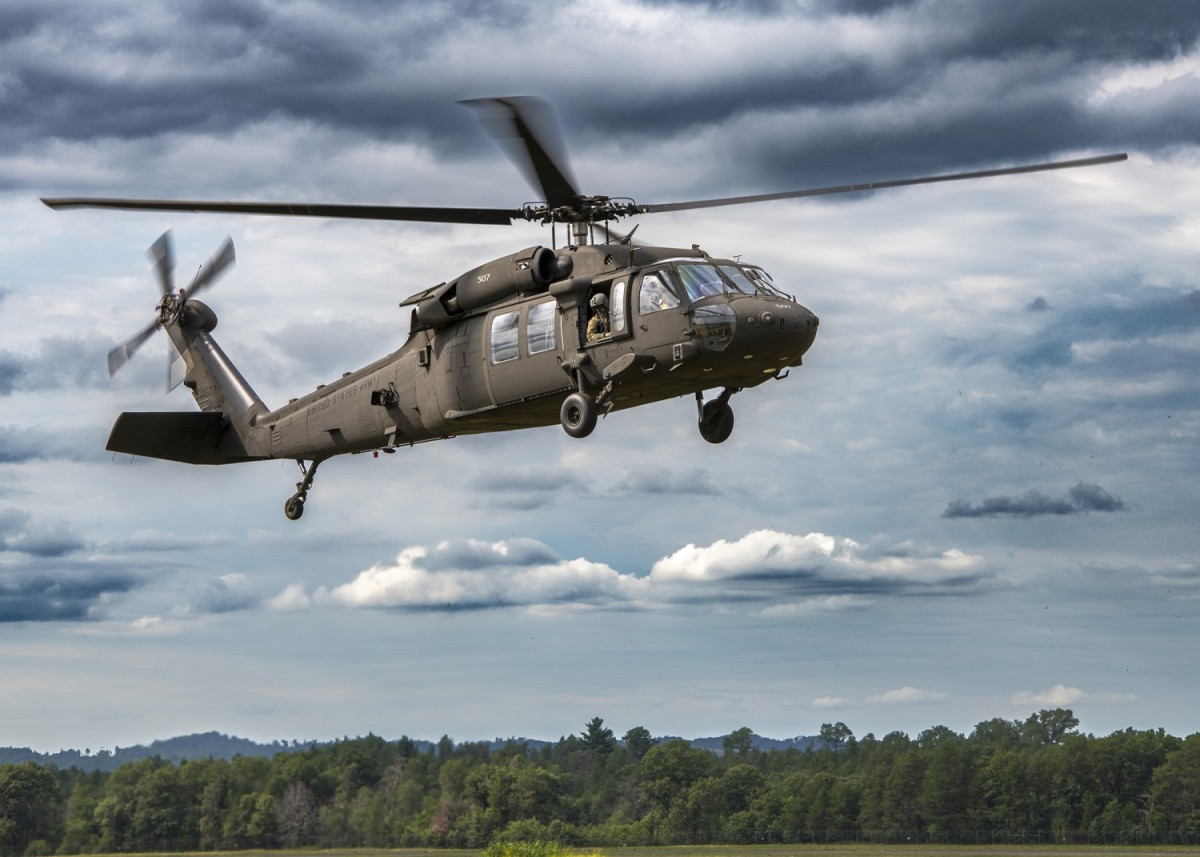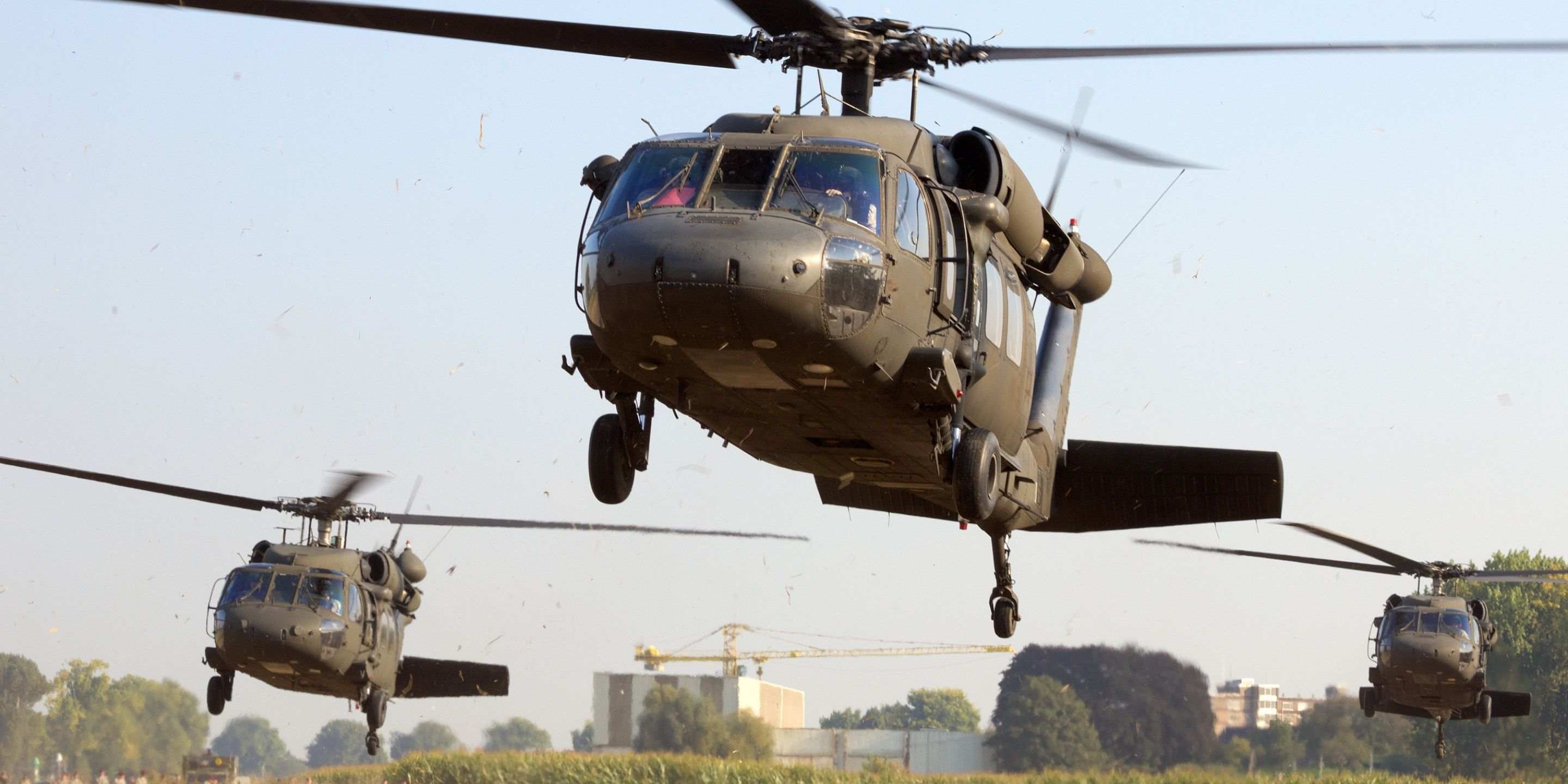Why the UH60 Continues To Be a Standard in Modern Helicopter Engineering
Comprehending the UH60: The Ultimate Armed Force Helicopter Experience
The UH-60 Black Hawk helicopter stands for a crucial evolution in army aeronautics, combining robust engineering with complex operational capacities. Its design provides to a variety of objectives-- from army transport to clinical emptying-- showing its versatility throughout varied fight scenarios. As we discover the history, specs, and technological innovations of the UH-60, it becomes noticeable that its role in forming modern army approaches is both substantial and significant. This conversation invites a better assessment of exactly how this amazing aircraft continues to affect contemporary warfare dynamics.
History of the UH-60
Emerging from the requirement for a versatile energy helicopter throughout the late 1960s, the UH-60 Black Hawk was developed by Sikorsky Aircraft Firm in feedback to the U.S. Army's need for a modern-day battlefield transport helicopter. The design process commenced in 1972, finishing in its first flight in October 1974. The Black Hawk was engineered to change the aging UH-1 Iroquois, additionally understood as the "Huey," which had been a staple of Army air travel since the Vietnam War.

For many years, the Black Hawk has gone through numerous upgrades, maintaining its relevance in contemporary military operations. Its success has caused the growth of numerous versions, serving several branches of the united state army and allied forces worldwide, establishing the UH-60 as a foundation of military aviation history
Trick Features and Requirements
The UH-60 Black Hawk is distinguished by its sophisticated style and durable specs, which add to its flexibility on the field of battle. This multi-role helicopter features a twin-engine configuration, powered by 2 General Electric T700-GE-701C engines, providing a maximum result of 1,800 shaft horse power each. This powerful engine setup allows the Black Hawk to get to a maximum speed of approximately 183 knots (211 miles per hour) and a solution ceiling of 19,000 feet.
The aircraft's composite rotor blades supply outstanding lift and ability to move, while its four-blade major blades system boosts stability (UH60). The Black Hawk is equipped with advanced avionics, including an electronic cabin and evening vision capacities, ensuring effective procedures in varied conditions. Its cabin can suit as much as 11 soldiers or bring as much as 8,000 extra pounds of cargo, making it appropriate for numerous logistical requirements
The UH-60's modular style allows for very easy maintenance and upgrades, making certain durability and adaptability in evolving military needs. Additionally, its advanced survivability features, such as crashworthy seats and armor, enhance crew safety throughout objectives. Generally, the UH-60 Black Hawk represents a significant development in military air travel modern technology.
Operational Functions and Goals
Convenience is a hallmark of the UH-60 Black Hawk, allowing it to perform a vast selection of functional duties and missions throughout numerous military settings. Mainly developed for troop transport, the Black Hawk can lug up to 11 soldiers and is regularly used in air attack procedures, permitting fast insertion and removal of ground forces in opposed locations.

Along with troop transport, the UH-60 is adept at clinical emptying (MEDEVAC) objectives. Outfitted with sophisticated clinical devices and personnel, it can promptly leave injured soldiers from the battleground, significantly improving survival rates in critical situations. The helicopter also plays a critical function in logistics support, providing products, ammunition, and devices to forward operating bases in austere environments.
Moreover, the Black Hawk acts as a platform for special operations missions, including reconnaissance and straight activity. Its capability to operate in different terrains and its low-flying abilities make it an essential possession for units conducting concealed procedures.

Technological Developments
Innovation in aeronautics technology has substantially improved the capacities of the UH-60 Black Hawk, guaranteeing its relevance in modern army procedures. The helicopter is furnished with innovative avionics systems that provide pilots with premium situational understanding, including multi-functional displays, enhanced GPS, and cutting-edge terrain understanding systems. These functions enable precise navigation and mission execution, even in difficult atmospheres.
In addition, the combination of electronic interactions systems enables immediate and safe and secure information exchange in between systems, facilitating worked with operations. The UH-60's upgraded blades systems and composite products add to improved performance, offering higher rate, dexterity, and reduced upkeep expenses.
In addition, advancements in tool systems, such as the ability to release precision-guided munitions, improve the Black Hawk's role in combat situations. The helicopter's capability to support medical evacuation objectives is also reinforced by brand-new clinical devices and innovations, guaranteeing effective person care en route.
Last but not least, recurring improvements in stealth modern technology and noise reduction devices additionally strengthen the UH-60's efficiency in covert operations, allowing it to run in aggressive areas with a decreased possibility of detection. Jointly, these technical developments emphasize the Black Hawk's withstanding importance in army air travel.
Effect On Modern War
Boosted capabilities of the UH-60 Black Hawk have greatly influenced contemporary warfare techniques and techniques. Its adaptability in army transportation, medevac operations, and reconnaissance roles has redefined the functional landscape for military forces. The helicopter's capacity to run in varied atmospheres, from city setups to rugged surfaces, enables for greater tactical versatility, enabling commanders go now to adjust swiftly to transforming field of battle conditions.
The UH-60's sophisticated avionics and communication systems improve situational awareness, facilitating real-time intelligence sharing and sychronisation amongst devices. This capability is crucial in contemporary uneven warfare, where quick decision-making can establish the result of involvements. In addition, the helicopter's ability for quick insertion and removal of special procedures pressures has ended up being see this page a hallmark of modern-day military projects, highlighting rate and accuracy.
Additionally, the Black Hawk's combination with unmanned airborne systems and various other sophisticated modern technologies represents a shift in the direction of multi-domain operations. As a result, the UH-60 not just acts as an important property in standard disputes however additionally plays a pivotal role in counterinsurgency and peacekeeping goals, underscoring its enduring effect on modern-day armed forces teaching and the evolution of warfare.
Conclusion
The UH-60 Black Hawk represents a pinnacle of army aviation, characterized by its convenience, advanced design, and durable design. Its abilities in troop transport, clinical evacuation, and logistical support highlight its crucial function in contemporary armed forces operations. Constant technical innovations and enhancements have more solidified the Black Hawk's strategic significance, allowing fast feedback and adaptability in varied fight circumstances. Inevitably, the UH-60 remains an essential asset, forming the landscape of contemporary war and functional effectiveness.

Technology in air travel modern technology has dramatically enhanced the abilities of the UH-60 Black Hawk, ensuring its significance in modern military operations.The UH-60 Black Hawk represents a peak of military read the full info here air travel, defined by its versatility, progressed engineering, and robust style.